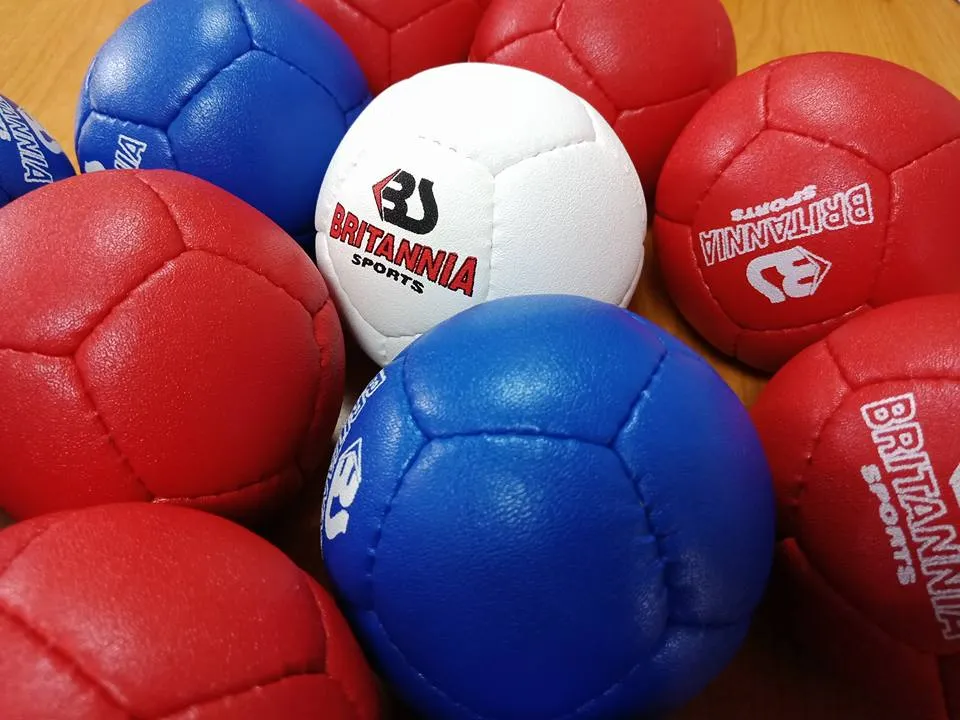What is Boccia?
It is called "Bocce Ball" in Taiwan, and is also translated as "Bocce Ball" in other Chinese-speaking regions. Boccia (BOCCIA) was originally a throwing game in ancient Greece. After correction, it became an activity that uses very few body movements but requires the use of strategies and skills. It is a competition designed for physically and mentally handicapped people with severe movement control difficulties.
In 1984, it listed as one of the Paralympic Games competitions; and in 1989, Cerebral Palsy International Sports and Recreation Association (CPISRA) was established. The meetings were held to discuss the competition rules and competition system. In 2013, Boccia International Sports Federation (BISFed) take over the matters related to cerebral palsy. In the past ten years, Boccia have been actively promoted all over the world, including the schools (special education schools), medical rehabilitation institutions, social welfare organization, and rehabilitation institutions for the physically and mentally handicapped people by combining the three major fields of medical care, education, and sports.
Besides cerebral palsy, the sport is expanded to other people with physical disabilities (muscle atrophy, spinal cord injury, rare diseases, etc.), mental disorders, visual impaired groups, and even senior citizen and children. We look forward to the sport becoming one of the national sports.
- Boccia Rules and Regulations
-
- 1. The BOCCIA court is a hard, flat ground of 6 meters X 12.5 meters.
- 2. The game is divided into red and blue teams. Each team may be made up of one, two or three players, played individually, in pair or in team.
- 3. The game is divided into red and blue teams. Each team may be made up of one, two or three players, played individually, in pair or in team.
- 4. The blue team throws the first blue ball.
- 5. The team that is further from the white target continues to throw the ball.
- 6. The game ends when all colored balls are thrown.
- 7. Scoring: The team that is closest to the white goal ball wins, every color ball that is closest to the opponent's target ball is counted as one point. (For example, if the red team wins, it is the red ball that is closer to the blue ball than the nearest target ball will receive points).
- 8. End of a game (Four or six innings), the team with the higher accumulation points from each inning wins the game.
Click below image to view more images about boccia sport.
According to the contestants' muscle tension, coordination ability or muscle strength, they are divided into different groups to compete.
- BC1 athletes have severe activity limitations affecting their legs, arms and trunk, and typically dependent on a powered wheelchair.
- BC2 players have better trunk and arm function than those in class BC1. The abilities of their arms and hands often allow them to throw the ball overhand and underhand and with a variety of grasps.
- BC3 class athletes have significant limitations in arm and leg functions, and poor or no trunk control. They are unable to consistently grasp or release the ball and are unable to propel the ball consistently into the field of play and allowed to use a ramp with the help of a Sport Assistant.
- BC4 class contains players with non-cerebral impairments that also impact their co-ordination.
- BC5 For conditions of both Cerebral and Non Cerebral origin
- ● Cerebral: Quadriplegic, Triplegic, Severe Hemiplegic.
- ● Non Cerebral: impairment may result from lack of muscle strength, limitation in range of movement or limb shortening.
- ● May use either a manual or power wheelchair
- ● May be able to walk with assistance or using a walking aid over short distances
- ● Has a more active throw as a result of increased trunk control and/or upper limb muscle strength
- ● BC5 athletes are not eligible for an on-court assistant.
- ● Or non-cerebral hemp athletes.
- Introduction to Sarawak Boccia Association (Persatuan Sukan Boccia Sarawak)
- History
Sarawak government officially introduced Boccia sport in 2018 to enable people with cerebral palsy and lower body paralysis represent Sarawak in national or international competitions. At that time, as Wishesland is a special support center for children with cerebral palsy, the government contacted the president of Wishesland through Sarawak Boccia coach, hoping that Wishesland is able to select suitable children to receive training to represent Sarawak in the 19th Malaysian Paralympic Games held in Ipoh, Perak.
Since Boccia is a very new sport for Wishesland and parents, everyone felt at a loss as to what to do and did not know where to start. In order to unite relevant people in the field such as the parents, Wishesland, the government, coaches, Sarawak Boccia Association was established on June 7, 2018.
The purpose of the Association is to promote Boccia to the people of Sarawak, especially those with cerebral palsy as well as people with lower body paralysis so that they can have an activity to show their talents. In addition, the Association also actively promotes Boccia to the clubs and community leisure centers, so that it becomes one of the leisure activities for the club members and senior citizens.
- Activities
- 1. Bocce training
- 2. Talent identification and development
- 3. Boccia sport awareness campaign
- 4. Boccia referee course
- 5. Boccia Coach training
- Contact No
- 019-2288419
- Mr. Chi Poh Yung, Secretary, Sarawak Boccia Association
- bocciasarawak@gmail.com
- For further information, please browse www.bisfed.com
